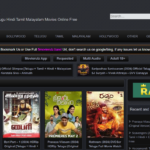Resource Allocation Challenges in Today’s Dynamic Work Environment
- 1 Resource Allocation Challenges in Today’s Dynamic Work Environment
- 1.1 1. Fluctuating Demands and Uncertainties
- 1.2 2. Complex Project Portfolios
- 1.3 3. Skill and Talent Management
- 1.4 4. Communication and Collaboration
- 1.5 5. Technology Integration and Adoption
- 1.6 6. Data-driven Decision Making
- 1.7 7. Agile and Adaptive Strategies
- 1.8 8. Leveraging Resource Capacity Planning Software
- 1.9 9. Harnessing Strategy Management Software
- 2 Conclusion
In today’s fast-paced business world, resource allocation is a critical determinant of success. Effectively managing resources ensures that projects are completed on time, within budget, and to the expected quality standards. However, the dynamic nature of modern work environments presents many challenges for organizations striving to optimize their resource allocation strategies. From fluctuating demands to evolving technologies, businesses must navigate various complexities to stay competitive and efficient. Explore some key challenges faced in resource allocation within today’s dynamic work environment and examine how capacity planning software and strategy management can help overcome these hurdles.
Resource Allocation Challenges in Today’s Dynamic Work Environment
1. Fluctuating Demands and Uncertainties
One of the primary challenges in resource allocation stems from the unpredictable nature of demand. Market trends, customer preferences, and external factors can rapidly change, leading to sudden spikes or drops in resource requirements. This volatility makes it difficult for organizations to forecast and allocate resources efficiently and accurately. Without proper tools and strategies, companies risk overcommitting or underutilizing their resources, wasting time, effort, and money.
2. Complex Project Portfolios
Modern businesses often manage diverse projects with unique requirements, timelines, and stakeholders. Balancing resources across multiple projects while prioritizing critical initiatives poses a significant challenge for project managers and resource allocators. Organizations may struggle to make informed decisions without a comprehensive view of the entire project portfolio and real-time insights into resource availability and utilization, leading to bottlenecks, delays, and missed opportunities.
3. Skill and Talent Management
Effective resource allocation involves assigning tasks to available resources and ensuring that the right skills and expertise match the appropriate projects. Skill gaps, talent shortages, and workforce diversity further complicate this process, making it challenging to assemble high-performing teams for project execution. Moreover, with the rise of remote and distributed work models, managing talent across geographical boundaries adds another layer of complexity to resource allocation efforts.
4. Communication and Collaboration
Successful resource allocation relies heavily on seamless communication and collaboration among stakeholders, including project managers, team members, department heads, and executives. However, coordinating resources and aligning efforts can be daunting in today’s dispersed work environments, where teams may be geographically distributed or working across different time zones. Miscommunication, siloed information, and lack of visibility into resource allocation decisions can lead to inefficiencies and conflicts within the organization.
5. Technology Integration and Adoption
Technology’s rapid advancement has revolutionized businesses, offering many tools and platforms to streamline resource allocation processes. However, integrating these technologies into existing systems and workflows while ensuring widespread adoption across the organization presents challenges. Resistance to change, legacy systems, and compatibility issues can hinder the effective implementation of resource allocation software solutions, limiting their potential to drive efficiency and productivity gains.
6. Data-driven Decision Making
In today’s data-driven business environment, organizations have access to vast amounts of information that can be leveraged to improve resource allocation decisions. However, turning raw data into actionable insights requires robust analytics capabilities and sophisticated algorithms. Without the right tools and expertise to analyze and interpret data effectively, organizations may struggle to make informed decisions, relying instead on intuition or outdated practices that fail to account for the complexities of modern work environments.
7. Agile and Adaptive Strategies
Traditional resource allocation approaches often follow rigid, top-down planning processes that are ill-suited to the dynamic nature of today’s business landscape. Agile methodologies, which emphasize flexibility, collaboration, and iterative planning, offer a more adaptive approach to resource allocation. However, implementing agile principles within resource allocation frameworks requires a fundamental shift in mindset and organizational culture. Resistance to change, lack of executive buy-in, and ingrained bureaucratic processes can impede the adoption of agile strategies, limiting organizations’ ability to respond quickly to changing market conditions and emerging opportunities.
8. Leveraging Resource Capacity Planning Software
Resource capacity planning software solves many challenges associated with resource allocation in today’s dynamic work environment. These tools empower organizations to make data-driven decisions and optimize resource allocation across projects by providing real-time visibility into resource availability, skills, and utilization. Advanced features such as predictive analytics, scenario modelling, and automatic scheduling algorithms enable organizations to anticipate demand fluctuations, identify potential bottlenecks, and proactively adjust resource allocations to meet evolving business needs.
9. Harnessing Strategy Management Software
A good strategy management software complements resource capacity planning by aligning resource allocation decisions with broader organizational objectives and strategic priorities. By centralizing strategic planning processes, performance tracking, and progress monitoring, these tools enable organizations to ensure that resources are allocated in alignment with overarching business goals. Integrated dashboards and reporting capabilities give executives and decision-makers actionable insights into resource allocation effectiveness, enabling continuous improvement and course correction.
Conclusion
Resource allocation in today’s dynamic work environment poses significant challenges for organizations seeking to optimize efficiency, productivity, and profitability. Fluctuating demands, complex project portfolios, talent management issues, communication barriers, technology integration challenges, and the need for data-driven decision-making all contribute to the complexity of resource allocation processes. However, by leveraging resource capacity planning and strategy management software, organizations can overcome these challenges and achieve better outcomes. By embracing technology, adopting agile methodologies, and fostering a culture of collaboration and innovation, businesses can navigate the complexities of modern work environments and thrive in an increasingly competitive landscape.


















